
Rapid changes, many jobs around equinox
News and advice from Charles to you

After recent rains, there are very few weeds growing, the biggest advantage of no dig
We've been extremely busy replanting a lot of the garden, and since there is little bed prep with no dig, it's a quick job. The longest part of it, until 26th August, was watering enough to be able to get plants in the ground.

15th July, watering an ex-beetroot bed before planting autumn cauliflower, water only in the three lines

Seven weeks later and they were under mesh for the first six weeks
Since then, in three weeks, 78 mm/3" rain has fallen and it's also turning cooler. That has really changed the game and growth is phenomenal. With lovely comments after the Open Day 6th September:
“Although we watch most if not all of your YouTube videos, the visit was incredible to see the quality of the vegetable plants and to just soak up the vibe.” Mark and Kate Gibbins.
“We're delighted to have seen the beautiful garden in person, we came away with a lot of learnings and ideas for our own garden,” Mary
Small transplants
I enjoy great success with transplanting small seedlings, between 2 to 4 weeks old depending what they are. It makes much more of any small propagation space.
I do not have a large propagation area, for 2000 m² / 0.5 acre intensively cropped. It's a fast turnover of sowing and planting and resowing, straight out of the greenhouse with no hardening off. Small seedlings slide up easily out of these trays, which you can reuse immediately with no cleaning needed.

Seedlings 12th September cabbage, spring onions, turnips, chervil all in CD60 trays
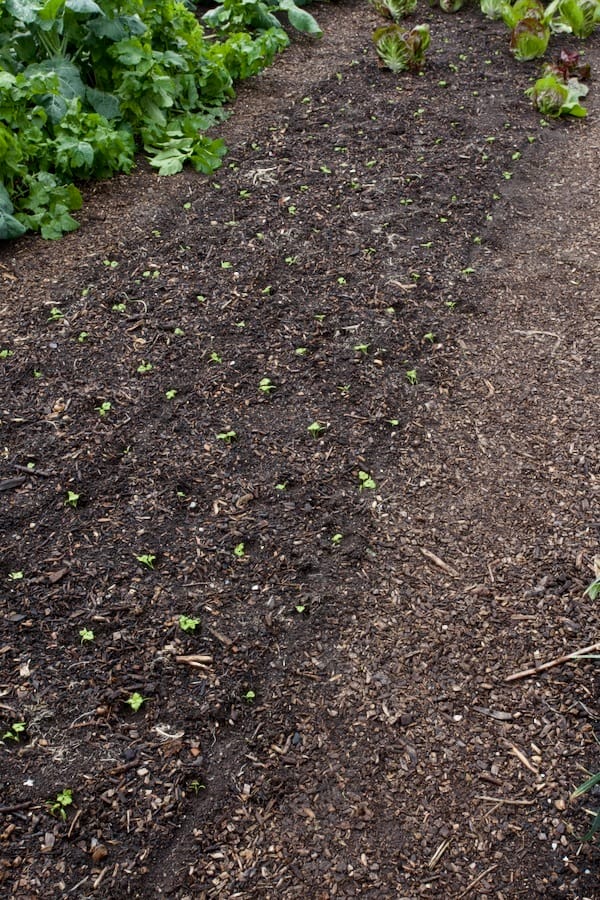
Chervil planted after radicchio, 4 weeks old. I had just harvested some excellent 506TT radicchio, that same morning.
Small transplants establish rapidly, with little shock from the move.

New planting of 12 days old American land cress, after harvesting squash
Coming up
This weekend I am teaching in Germany, next Weds 17th and also 24th are day courses here, Thursday I speak at Earthed in Hackney, London, next Saturday 20th at Yeo Valley Organic Garden Festival, and on 27th September, I'm in Ireland, giving a day course at Johnstown Castle in Wexford. There are courses in October and November also, see my events page.
Trial of forking and composts
Interesting results from this trial, in the harvests of Crown Prince F1 winter squash. They were the second planting in these three beds this year where already we had 47 kg turnips and greens earlier in the season.
After transplanting the squash in May, two per bed, they reached harvest this week. See my video for more details.
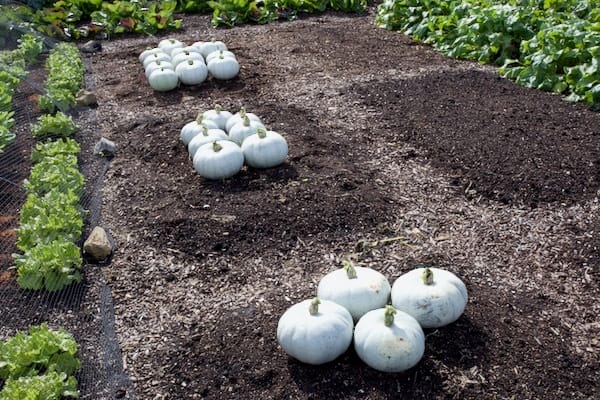
Crown Prince F1, forked bed nearest, toilet compost furthest, from two plants in each bed, since 8th May
The nearer bed was forked last December, and has been forked every winter since 2013. It gave 16.5 kilos of squash.
The second bed, with the same compost but no dig, produced 26 kilos.
And the third bed, with compost made from our compost toilet (link to video), yielded an amazing 53.6 kilos. The compost was18 months old when spread 2 cm deep last December, it has no unpleasant smell, and shows just how valuable this resource can be.
More details about this trial here.
These squash are dense, high-value food and can store until next summer, in dry and warm conditions through winter. If the stalks of your winter squash are turning dry, and leaves are mostly dead or covered in mildew, it's a good time to harvest them over the next three weeks or so.

Same beds, Mustard Sinapis alba sown 5 days earlier, on 12th September
Sow now
There are big opportunities at the moment.
Firstly if you have any spare space not needed for new plantings before next spring, scatter seeds of a green manure / cover crop of either mustard Sinapis alba, or phacelia. The former is my preference because it's killed by frost and leaves a straw-like residue of dead stems on the surface, enjoyed by earthworms. And the ground is then clear, slug free for new plantings in the middle of March.
Phacelia survives more frost than the mustard, and you will probably need to pull it in late winter or early spring, whenever you need the space for planting. Or leave it to flower until pulling it before later plantings such as tomatoes and squash.
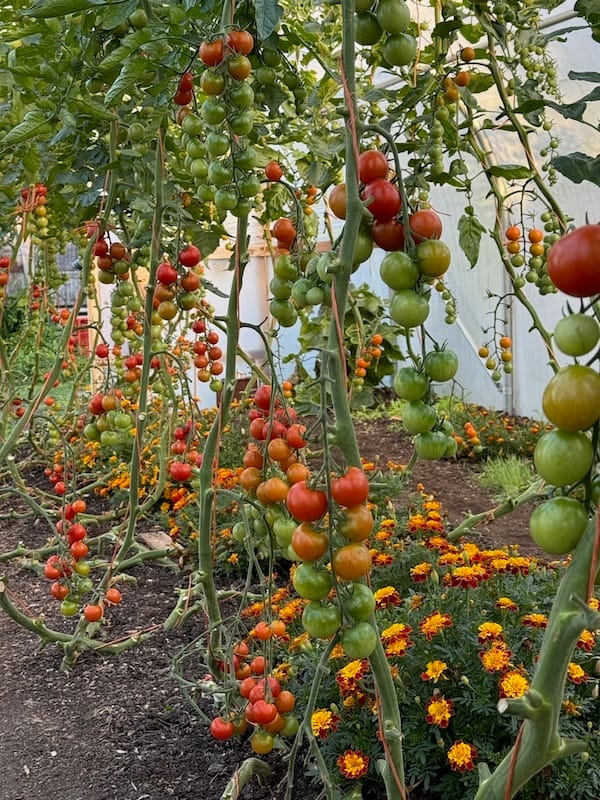
Sungold and Sakura have four weeks more of cropping before we remove plants, to replace with winter salads. We spread 3 cm year-old horse manure in May before planting, and some dried seaweed in July. I do not feed them.
Speed the ripening of tomatoes in soil, by giving no more water until you remove them. Plus continue to remove all side-shoots and new growth.
Big sowings in the coming week, of salad plants for cropping under cover through winter, are lettuce, endive, salad rocket, mustards such as Green Frills, chard + kale + + spinach if not already sown, claytonia, American land cress, chervil, coriander, spring onions and more.
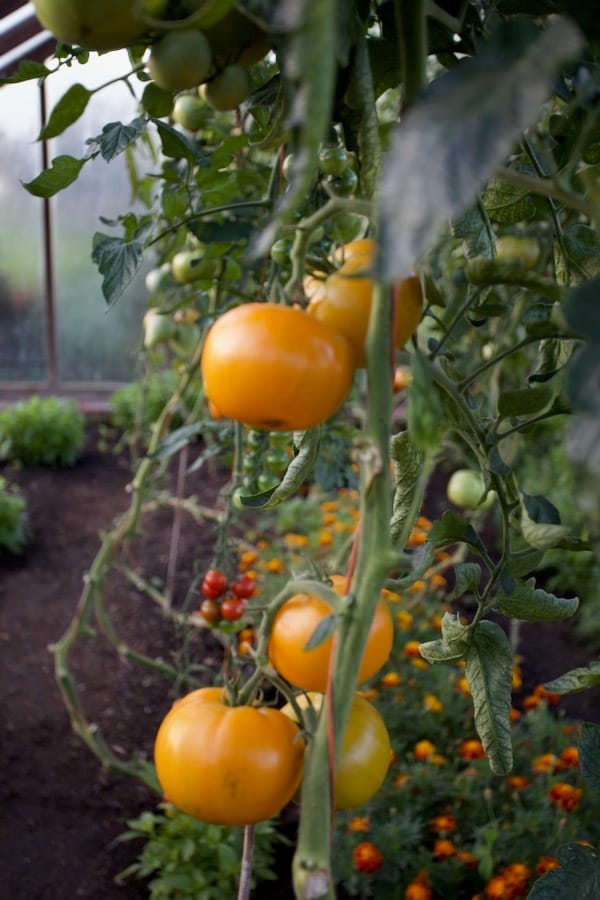
In this summers sunny conditions, beef tomatoes have given a lot of harvest, and this one is Orange Wellington F1. The other standout has been Sonnenherz yellow oxheart tomato, both have excellent flavour.
Dry beans winter food
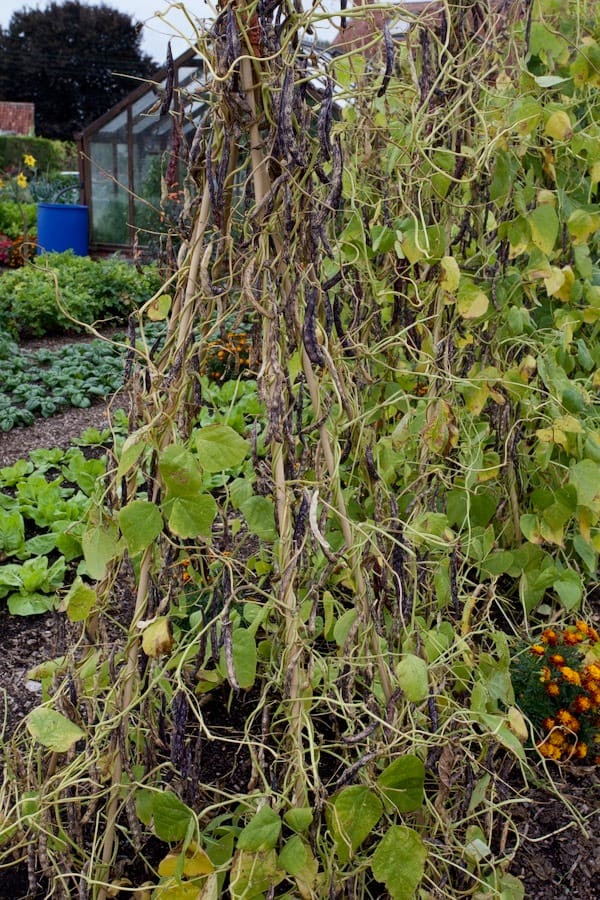
Borlotti beans just before harvest 9th September, six plants per teepee from seed of 2024 harvest
This autumn especially, even the mature pods with dried beans inside, are not fully dry when harvested. I lay them in a thin layer in the thin wide crates, to stay in the conservatory, preferably on a sunny windowsill, for up to 2 weeks.
To store as dried beans, the pods must be almost dry to the touch when you pick them. If they are still soft, the beans inside are swollen and are good to eat fresh at that point, but will lose quality if picked and then dried from that stage of maturity.

Borlotti bean pods already quite dry, and drying to a crisp stage on a sunny windowsill, 12th September
The video shows how you can then extract beans quickly from the pods once they are fully dry.
Propagation 2026
This is a good time to be prepared with compost for next years potting mix, to sow in trays and module cells. Last week, Adam was turning an eight month old heap, and we noticed it's excellent quality, plus that it was suitably dry (though still moist) to pass through a 10 mm sieve. It's now in sacks in the shed, for use next spring.

Passing eight mont compost through a standalone sieve + a 10 mm frame for a finer result. You could also lay a sieve frame on a wheelbarrow.
Sowing dates, see my 2026 Calendar
My favourite time to sow, when it's possible, is two to 5 days before full moon. This results in larger plants of excellent quality, which also store well. See the celeriac example below, photos taken this week from sowings in March on two different dates.
I explain about this in my New Energies book, available on my website. Sadly, we cannot ship anymore to the US because of customs tariffs and the hurdles created by customs around those duties. Fortunately, they do not apply to digital products and the book is available in digital format
Happy Gardening
Despite the declining daylight, it's a lovely time to be in the garden.
I hope that the next few weeks bring you joy, and abundant harvests.
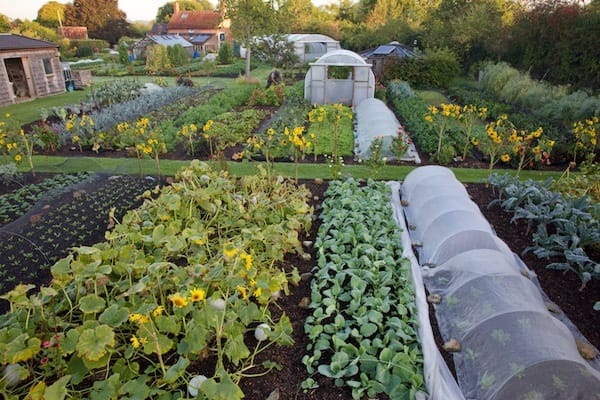
Homeacres view from the top 9th September, kohlrabi mid centre with its cover, against cabbage root fly, temporarily removed

